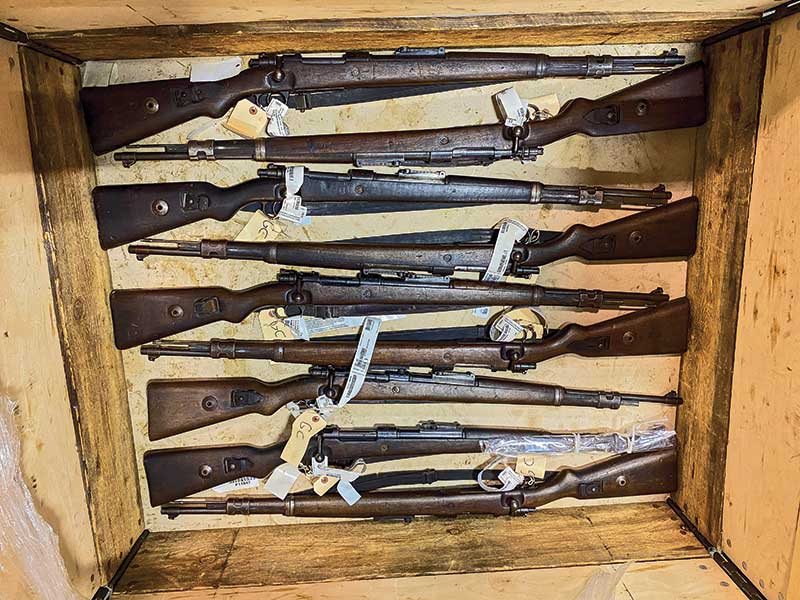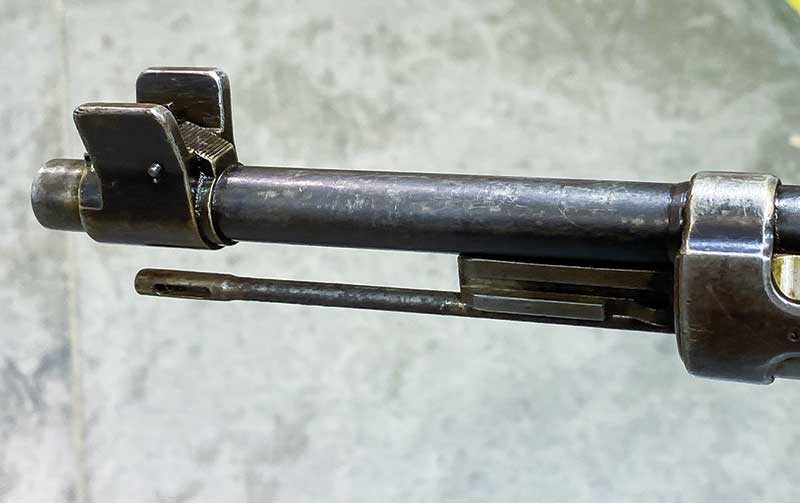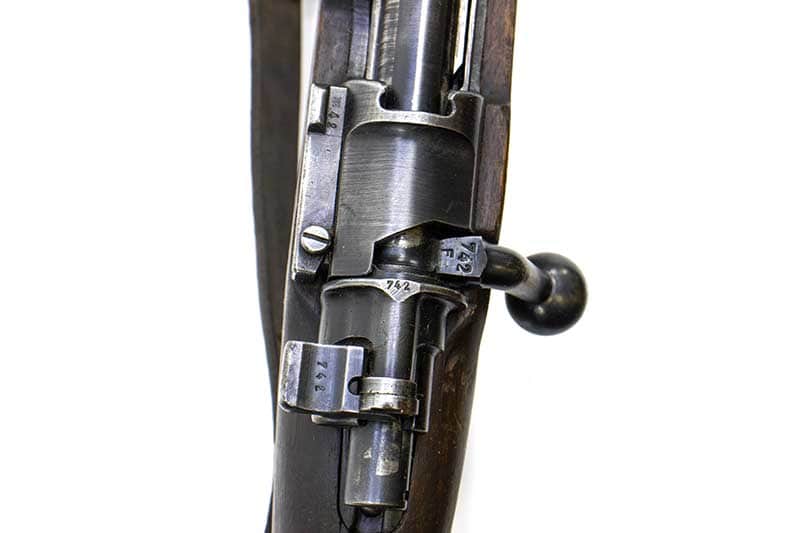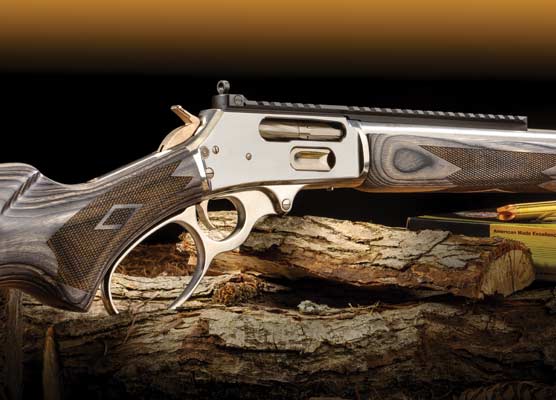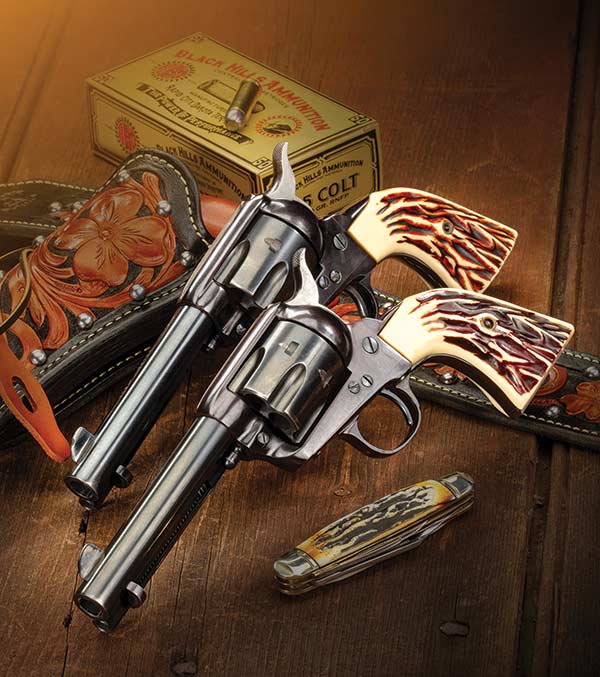Portugal Mauser 937
Unicorns For The U.S. Collector Market
It’s very rare these days, but caches of World War II surplus still turn up. Recently on www.CenterfireSystems.com, I discovered 1937-contract Portuguese m/937A and 1941 m/937B Mauser Kar98k type rifles, many matching-number guns with matching-number bayonets. These are rare guns, all chambered in 7.92 x 57mm (8mm Mauser) with walnut stocks and marked on the receiver ring with the coat of arms of Portugal.
Fading Glory
Portugal is a small country and its grand colonial empire was essentially the stuff of history by the late 1930s when they decided it was time to upgrade their military rifle. Only around 160,000 of the new m/937 were made in total, all but 10,000 for the Portuguese. The first order of 100,000 was fully delivered by early 1938 and evenly split between guns of the standard pre-war German military — flat buttplate, Kar98k pattern designated by the Portuguese as the m/937 — and latter half-modified to Portuguese specifications by the addition of a heavy winged, open top front sight protector, a middle barrel band with sling swivel on the bottom as well as the standard side loop, and dual rear quick-detachable sling swivel mounting points.
One QD sling swivel was on the bottom of the buttstock just behind the wrist like the World War I-vintage German Gewehr 98 rifle and contemporary Mauser Standard Model short rifles of the 1930s. The second was inlet into a dished out portion on the left side of the buttstock. The dual sling mounting points allowed the rifle to be slung flat across the back for cavalry and artillerymen, as well as over one shoulder with the stock tucked flat against the hip in the conventional manner for infantrymen on the march.
In 1941 the Portuguese placed an order for another 50,000 rifles that were identical to the standard German military pattern with the buttstock cut through to attach the standard German military adjustable leather sling. Some of this run also had the later style cupped sheet metal buttplate. The Portuguese called this model the m/937B.
Check Please!
To my delight, the guns at Centerfire Systems ranged from good to excellent, probably owing to Portugal’s extremely limited combat operations during the period of their service. Pricing ranged from $900 to $1,700 depending on condition, matching numbers and accessories. Maybe this seems like a lot of money but considering what you would pay these days for a 1941-dated German military issue Kar98k alone, much less one with a sling, bayonet and scabbard and cleaning kit, they seem underpriced to me. Most of the rifles I examined had good exteriors and excellent, bright bores.
The only thing distinguishing a m/937B from early war German military Kar98k is the Portuguese coat of arms receiver stamp and stock cartouche. It’s the same gun, made in the same Mauser-Werke A.G. Oberndorf factory, and liberally marked with Waffenamt Nazi eagle inspection stamps.
In a move suggesting the magnitude of the military/industrial undertaking required for a world war wasn’t fully appreciated by those Nazis, around 10,000 m/937B rifles, completed and ready-to-ship to the Portuguese in 1941, were instead taken by the German military to meet their immediate needs. Those rifles actually saw service with the Wehrmacht in World War II and have since turned up around the world as surplus, most recently among the Russian-captured stocks of Kar98k rifles.
Mauser made an additional 10,000 m/937B rifles to complete the Portuguese contract and delivered them before the end of 1941.
Now for the weird part — by 1941, World War II was already in full swing for a year. German armies invaded and occupied Poland, Belgium, Netherlands, Luxembourg and France. In June of 1941 they were invading the Soviet Union and exponentially increasing their military requirements. This begs the question “why on earth did the Mauser company even accept a contract from Portugal, a non-allied/neutral power, in 1941 and then fulfil it when their best domestic customer clearly needed more guns?”
It’s easy enough to see why a cash-starved Mauser firm would jump on foreign contracts for its rifles after Adolph Hitler decided it was time to kick-start the German arms industry in preparing for war. German companies were blocked from the world arms market after World War I while Fabrique National in Belgium and BRNO in Czechoslovakia profited making variants of Mauser designs.
In the midst of a global economic depression, the Mauser factory must have been eager to get a piece of the action — and they did. Before Germany kicked off a shooting war in Europe with the invasion of Poland in 1939, Mauser had openly made rifles for China, Brazil, Honduras, Paraguay, Peru, Chile, Argentina, Ethiopia and Portugal while quietly re-arming Germany’s growing military.
Geopolitical Chess
I think the main reason Mauser was allowed to accept and deliver on the 1941 Portuguese contract in the midst of a burgeoning world war was actually strategic. Portugal had two things both the Axis and Allies wanted very badly: tungsten and the Azores Islands in the South Atlantic. The former was needed for weapons and ammunition, the latter as unsinkable aircraft carriers from which to attack Allied shipping or sink German U-boats.
At the outbreak of WWII, Portugal and Spain had traditionalist, deeply Catholic, nationalist governments with plenty of their own domestic problems to fix and nothing to gain by getting tied up in a world war. They declared their official neutrality, but without the strength to defend it. Vulnerable to attack, both Portugal and Spain knew they could easily become battlegrounds if they failed to balance the demands of both the Axis and the Allies. Both counties navigated neutrality with pragmatic diplomacy. The story of how Portugal did this is especially enlightening reading and will answer your questions about how tiny, weak Portugal got its m/937B rifles from big, mighty Germany.
